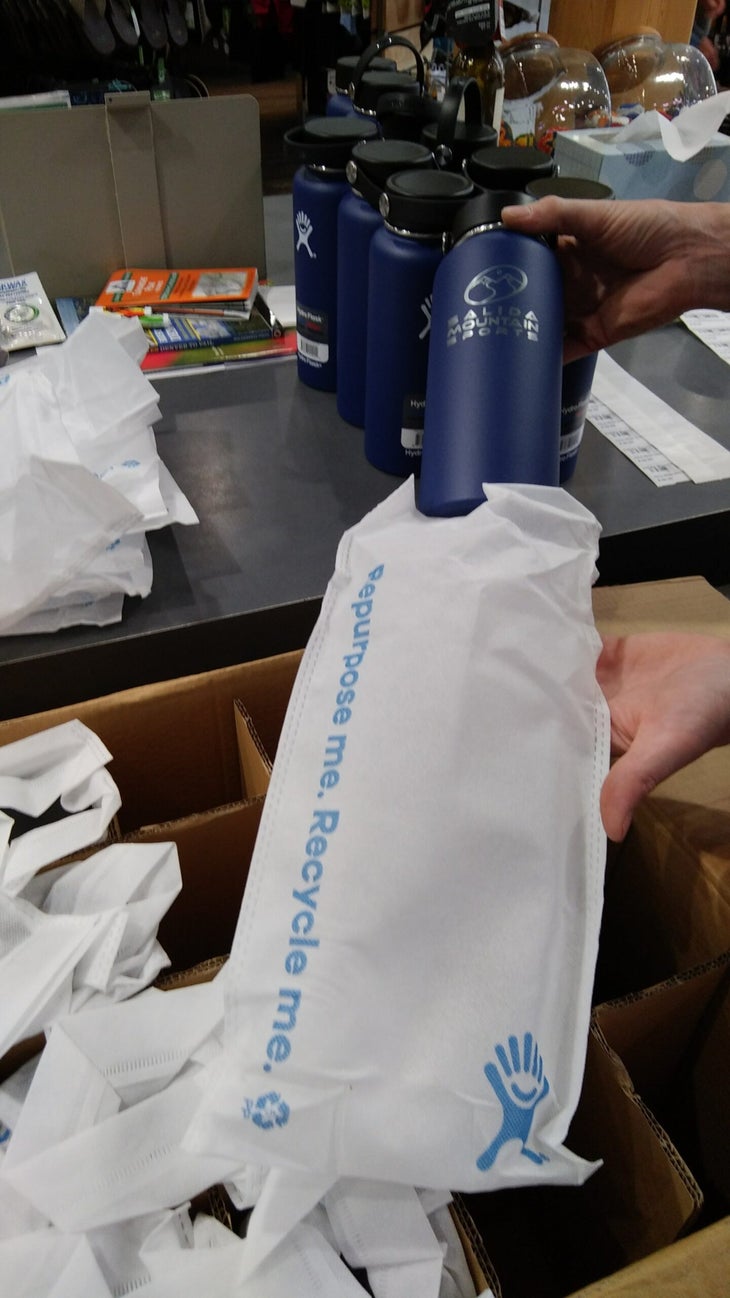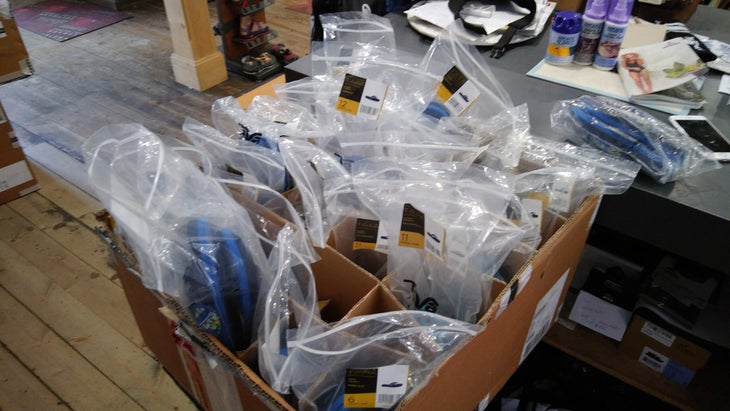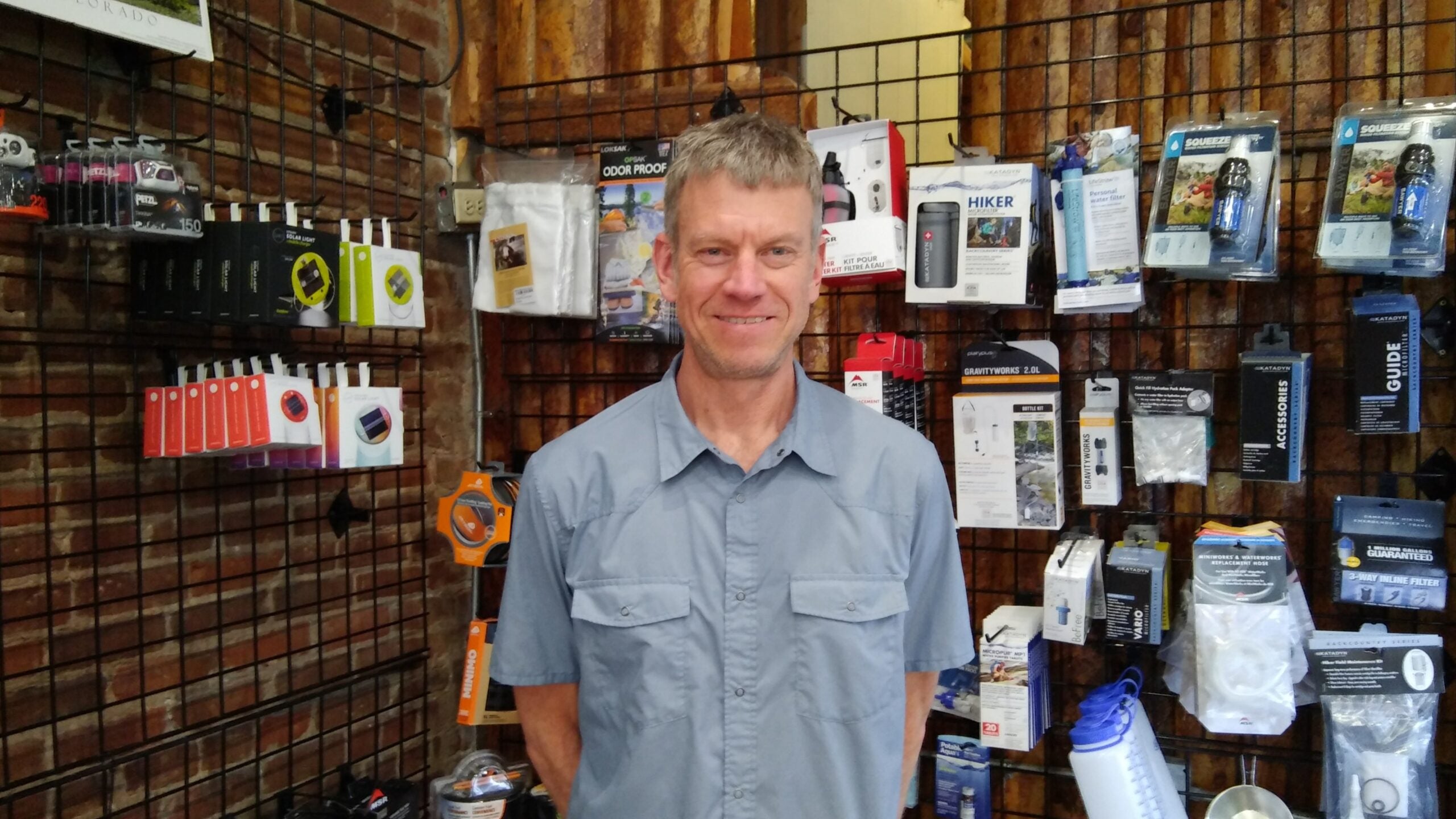Dear outdoor gear and apparel companies,
Each change in season brings a new round of product arriving at stores across the country. My staff and I get excited when the UPS and Fedex trucks roll up…we know the store will soon be filled with cool new gear, and we get to share the stoke with our customers.
But we also get really, really frustrated because of the mountain of waste that accompanies all that new gear. Sometimes the pile of recycling and trash is bigger than the products that came in it.
As an industry, we pride ourselves on being “green” and eco-conscious.
- We have working groups aimed at developing sophisticated tools to minimize our impact on the planet.
- We proudly tout our bluesign-certified products and the recycled nature of our fabrics and materials.
- We preach minimal impact lifestyles and Leave No Trace ethics to our customers.
- We raise money and awareness in the fight against climate change.
But behind the scenes? In the distribution centers and back rooms of retail shops all over the country? Well, collectively, we’re not doing so hot on that front.
Too Much Packaging
Almost across the board, there’s just too much packaging used. We know your overseas manufacturers have to protect the goods before loading them into containers to traverse oceans to get to our stores, but does every item have to be individually poly-bagged?
Plastic waste is getting a lot of attention these days. We’ve all seen pictures of plastic “islands” in the ocean, or dead whales that have scooped up too much debris while feeding.
Let’s find better solutions! Asian factories will keep doing what they’re doing if we don’t push them for different solutions. Can’t we use bigger polybags and put multiple items in each one? Or can we find a better option—something biodegradable—than plastic? Are we at least trying to change the paradigm?
Too Many Hangtags
Lots of you use too much material in your tags. We know hangtags are important because they provide information about the product, company, and they’re a place to put a barcode label or price tag.
But there’s no reason to overdo them. Something just big enough for the key information and a price tag is all that we—and the customer—need. Please use recyclable, renewable, or sustainable materials. And please: Can you keep it to just one or two hangtags? Any more than that and it’s just overkill. The tags end up getting in the way and junking up the look/appeal of your product.
Too Many and Irrelevant POP Display
First things first: you should not just build and send racks without checking with us first. We often get POP materials at our store that don’t even relate to our product mix! Straight into the recycle bin or dumpster they go.
Lots of you overdo it with racks, signage, and POP materials, period. But to make matters worse, many of your displays are not designed to withstand the wear and tear of the sales floor. They end up looking tattered and shabby after a few weeks, and that doesn’t help sell product.
Please: design your POP materials to be durable and modular, and stick with a marketing theme that has a several-season life-cycle so they aren’t obsolete in one season.
Brands That Get a Thumbs Up
prAna, you do a good job. You don’t individually bag each garment in plastic. Each piece comes rolled up, tied with a piece of raffia. (I suspect your clothing comes from Asia in polybags like everyone else’s, but you save us the hassle of de-bagging, and we appreciate it. Hopefully you’re recycling all those polybags.) You also get props for packing a lot of items into each box. Your hang tags are small and made of recycled cardboard; just enough room for product info, like SKU, size, color, and a price/barcode label. You attached them to the garment with string rather than plastic. There’s no tissue paper folded up in each shirt, no plastic clips keeping the garment folded. Clean, simple, and smart.
Keen, you use 100 percent recycled shoeboxes. And more importantly, you fill each shipping box efficiently, whereas many other companies send us multiple half-empty boxes with just one style per box. It’s just silly.

Latitude 40, you use old or misprinted maps to fill empty box space, no bubble wrap crumpled packing paper.
Sanuk, you get brownie points for your great display rack that’s durable and modular, with signage that’s easy to swap out as your branding message changes.
Hydro Flask, you get props for shipping your bottles in reusable bags.
Brands That Get a Thumbs Down
Red Ledge, you go way, way overboard. You pack each garment in a separate, poly bag that goes straight into the trash. (We recycle the ones that we can.) You put six (!) hang tags on each garment, two of which have multiple folds. This is really overkill and actually hurts the sales process by making it fiddly to find the one hang tag with the size and price.
Almost all of you flip flop vendors—including Teva, Sanuk, Reef, you individually bag each pair of sandals. Many of you use some kind of foot form—often plastic or foam—to give the sandal a shape. Is this really necessary? I don’t think so.

Even you big guys like The North Face, Patagonia, and Columbia use way too many plastic bags. This is especially painful coming from companies like you with lots of resources to be creative and resourceful and make a difference by throwing your weight around.
Nebo, you really miss the mark. The only way to buy your tools is in a pre-packaged display case made of plastic. Every re-order comes with a new display, so the old ones get tossed. I know you mean well, but it’s so wasteful.
What Can Brands Do?
Be creative! Come up with display, marketing, and packaging programs that are as minimal, eco-friendly, and functional as your products. Then lean on suppliers and manufacturers to find new packaging solutions that use fewer, more earth-friendly materials.
As retailers, it’s up to us to speak up, and voice our discontent with the same old packaging protocols. When you see excessive packaging from a company, tell them. Ask them to do better.
Our entire industry depends on a healthy planet, and we do so much good in terms of advocating for climate change solutions, creating sustainable products, and supporting environmental initiatives.
Why are we still so bad with packaging?
Nate Porter opened Salida Mountain Sports with his wife, Diana, in 2007. He has been in the outdoor industry since 1990, and enjoys the great people he’s met along the way, as well as the opportunity to work in an industry that promotes healthy lifestyles and caring for wild lands. When not in the shop, he can be found skiing, hiking or biking around the Sawatch Mountains.


